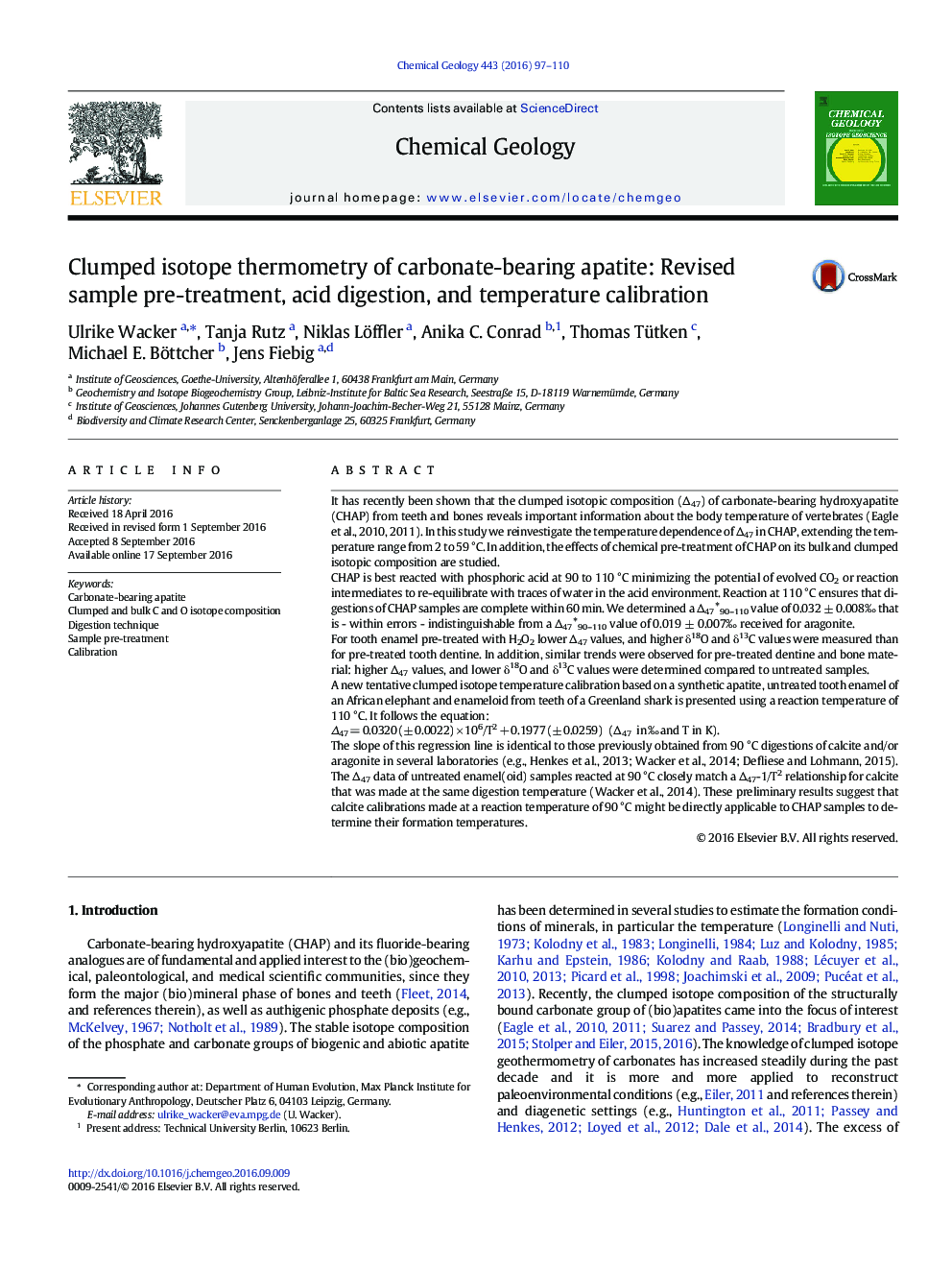| Article ID | Journal | Published Year | Pages | File Type |
|---|---|---|---|---|
| 6435988 | Chemical Geology | 2016 | 14 Pages |
It has recently been shown that the clumped isotopic composition (Î47) of carbonate-bearing hydroxyapatite (CHAP) from teeth and bones reveals important information about the body temperature of vertebrates (Eagle et al., 2010, 2011). In this study we reinvestigate the temperature dependence of Î47 in CHAP, extending the temperature range from 2 to 59 °C. In addition, the effects of chemical pre-treatment of CHAP on its bulk and clumped isotopic composition are studied.CHAP is best reacted with phosphoric acid at 90 to 110 °C minimizing the potential of evolved CO2 or reaction intermediates to re-equilibrate with traces of water in the acid environment. Reaction at 110 °C ensures that digestions of CHAP samples are complete within 60 min. We determined a Î47 â 90-110 value of 0.032 ± 0.008â° that is - within errors - indistinguishable from a Î47 â 90-110 value of 0.019 ± 0.007â° received for aragonite.For tooth enamel pre-treated with H2O2 lower Î47 values, and higher δ18O and δ13C values were measured than for pre-treated tooth dentine. In addition, similar trends were observed for pre-treated dentine and bone material: higher Î47 values, and lower δ18O and δ13C values were determined compared to untreated samples.A new tentative clumped isotope temperature calibration based on a synthetic apatite, untreated tooth enamel of an African elephant and enameloid from teeth of a Greenland shark is presented using a reaction temperature of 110 °C. It follows the equation:Î47 = 0.0320 (± 0.0022) Ã 106/T2 + 0.1977 (± 0.0259) (Î47 in â°Â and T in K).The slope of this regression line is identical to those previously obtained from 90 °C digestions of calcite and/or aragonite in several laboratories (e.g., Henkes et al., 2013; Wacker et al., 2014; Defliese and Lohmann, 2015). The Î47 data of untreated enamel(oid) samples reacted at 90 °C closely match a Î47-1/T2 relationship for calcite that was made at the same digestion temperature (Wacker et al., 2014). These preliminary results suggest that calcite calibrations made at a reaction temperature of 90 °C might be directly applicable to CHAP samples to determine their formation temperatures.
